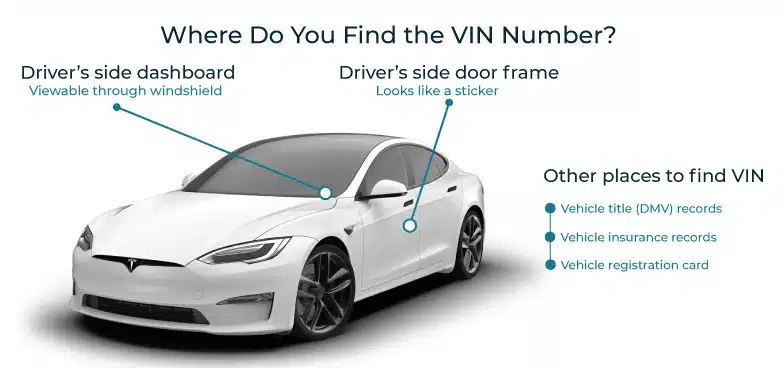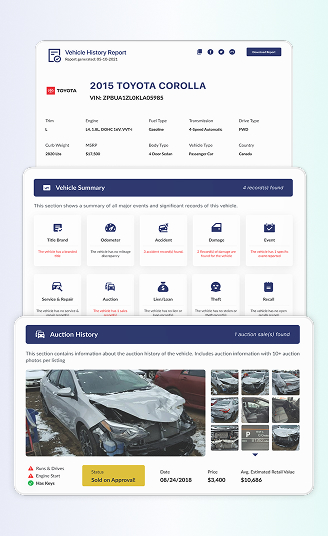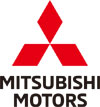
Mitsubishi Recall Check
Protect your family and your wallet. Enter your VIN to uncover open recalls, recommended fixes, and a detailed vehicle history for total peace of mind.
What is a Mitsubishi Recall?
Mitsubishi Motors, part of the Renault-Nissan-Mitsubishi Alliance, builds budget-friendly SUVs like Outlander and Eclipse Cross, with a plug-in-hybrid Outlander PHEV that underscores the brand’s practical, value-first approach. Still, Mitsubishi’s face recalls like any automaker.
A Mitsubishi recall means the company or the National Highway Traffic Safety Administration (NHTSA) flags a safety defect or rule violation and instructs dealers to fix it at no cost. Verify your vehicle by VIN to see if your Mitsubishi has an open recall.
Why You Should Check the Mitsubishi Recall History?
Running a Mitsubishi Recall Check is an essential step for any used car buyer. It is a small investment that can provide significant benefits. Here are a few other reasons why:
Avoid Unsafe Mitsubishi
Mitsubishi recalls are issued when a vehicle has a safety defect or fails to meet federal standards. Issues range from minor glitches to serious hazards. Running a Mitsubishi Recall Check reveals open campaigns tied to your VIN, so you can schedule free dealer repairs, avoid accidents, and protect your family on every drive.
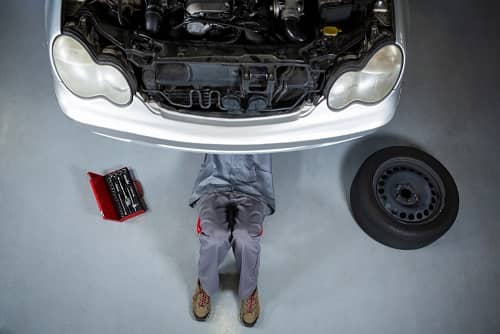
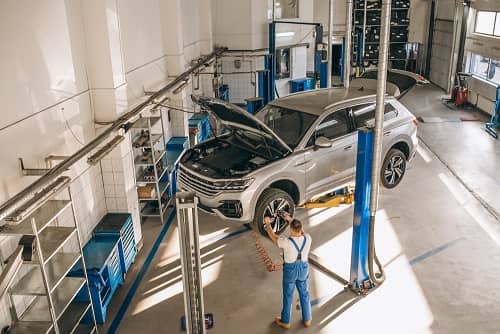
Compliance
Buying a used Mitsubishi with an open recall may mean the vehicle isn’t compliant with U.S. federal safety standards. That can invite legal headaches and hurt resale.
A quick Mitsubishi Recall Check proves whether a vehicle is recall-free, and helps schedule no-cost fixes. Stay proactive to avoid liability, prevent insurance complications, and preserve the vehicle’s future marketability.
Financial Protection
A Mitsubishi Recall Check helps you avoid costly surprises. If a recall is identified, the manufacturer must repair the defect free of charge. Checking recall history also flags common safety issues such as airbags, software, fuel, or mechanical components, so you can buy confidently, protect your budget, and keep every drive compliant and safe.

How to Run Mitsubishi Recalls
Discovering your Mitsubishi recall report is just a minute away! Follow these easy steps to get the information you need quickly and effortlessly:

Locate Your Mitsubishi VIN
Find your VIN. Look on the driver’s side dashboard by the windshield, the driver’s door jamb label, or your insurance card or title. You may also see it on a compliance plate in the engine bay or trunk, or in the owner’s manual.


Fill in the Form
Type the VIN into the recall form above to launch a Mitsubishi Recall Check. If you don’t have the VIN, use your license plate to fetch it.


Receive Your Mitsubishi Recall Report
Your Mitsubishi recalls report appears in just seconds, listing open campaigns, risks, and steps for free dealer repairs. Works for classic and current Mitsubishis alike.
What is on the Mitsubishi Recall Check?
In the Detailed Vehicle History, a Mitsubishi recall check shows detailed information about safety recalls affecting your vehicle. Each record outlines when the recall was announced, which component is impacted, and what action you should take.
Read further to see the detailed breakdown:
- Date of recalls: When the recall was officially issued by Mitsubishi or NHTSA. This helps you judge urgency and see how recently the issue was identified.
- Affected Component: Know precisely what’s wrong and what the fix involves. Each report will specify which Mitsubishi component is affected, detailing the defect and outlining the repair process required to fix it.
- Consequences: Here, you’ll find the potential risks associated with the defect, such as how it may impact your Mitsubishi’s performance or safety.
- Next step for the affected Mitsubishi: Check if your Mitsubishi has an open recall with the Mitsubishi recall check by VIN, then schedule the free dealer repair. Your full Vehicle Report also shows past recalls and repair status.
A Mitsubishi vehicle history report also includes lien and loan records, damage verifications, auction history, warranty coverage check, and more.
Review the records below to see the details:
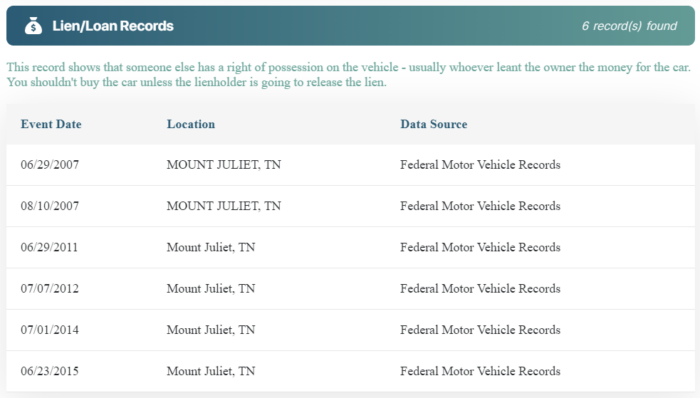
Lien and Loan Records
Identifies whether the Mitsubishi has unpaid loans or liens. This helps protect you from future legal or financial trouble when transferring ownership after purchase.
Damage Verification
Identifies fire, flood, auction, or major damage records that may impact your Mitsubishi’s performance, resale value, and long-term safety.
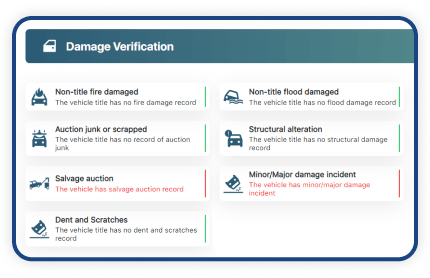

Auction History
Reveals past auction listings for the Mitsubishi, including sale date, price, location, and bid range. View 10+ photos (if any) to check its condition and understand its market value history.
Warranty Coverage Check
Showing if your Mitsubishi is still protected under its original factory coverage. This insight protects your wallet, as eligible repairs can still be handled for free by Mitsubishi dealerships.


Service & Repair Records
Provides proof of past repairs and scheduled maintenance. Knowing this history helps avoid surprise breakdowns and reassures you that the Mitsubishi has been responsibly taken care of.
Mileage Records
Check how far the Mitsubishi has traveled from its first record to its most recent. This section helps you validate seller claims and avoid buying vehicles with manipulated odometers.

Common Issues Leading to Mitsubishi Recall
Mitsubishi vehicles have faced several recalls due to safety and reliability concerns. Common issues include the driving-critical powertrain & control, visibility & driver-assist electronics, occupant restraint systems, and other notable issues.
Below are some of the causes behind the Mitsubishi recall notices.
Driving-critical powertrain & control
Fuel Pump’s Commutator And Wires Faults
A supplier manufacturing error on the fuel pump commutator and wires led Mitsubishi to recall 2022 Outlander SUVs. When the parts aren’t fused right, the pump’s brush/commutator can wear abnormally, lose continuity, and shut down, causing the engine to stall on the road.
Dealers will replace the pump for free with a countermeasure unit from a different subcomponent supplier.
Fuel Pump Impeller Issues
Mitsubishi flagged fuel-pump impeller problems tied to a supplier defect seen industry-wide. In markets like Vietnam, the Xpander was recalled to swap in an improved pump after testing showed the plastic impeller could absorb fuel, deform, and seize, starving the engine. Models built between August 2018 and September 2019 were inspected and fitted with improved pumps at no cost.
Visibility & Driver-Assist Electronics
Rear View Camera
Mitsubishi recalled more than 198,900 SUVs after finding that the infotainment software can freeze or go black, killing the backup camera view. This recall covers 2022–2024 Outlander and 2023–2025 Outlander PHEV. The fix is a software update to restore compliance with FMVSS 111 and is free at dealers.
Owner mailings began late June 2025. Vehicles built after April 22, 2025, already use corrected software from the factory. This action replaces and expands Mitsubishi’s 2023 camera campaign.
Body Hardware & Closures
Liftgate Gas Struts
Mitsubishi filed NHTSA 25V-507 in August 2025, covering 2014–2020 Outlander and 2018–2022 Outlander PHEV SUVs because liftgate gas struts can corrode in “Salt Belt” states, lose pressure, or even rupture, making the heavy hatch fall without warning.
Owner letters are expected to begin on October 6, 2025. If you haul kids, gear, or groceries, schedule the repair now and keep that hatch safely overhead.
Occupant Restraint Systems
Takata Inflators
Takata airbag inflators can turn a minor crash into a tragedy. Their ammonium-nitrate propellant degrades in heat and humidity, causing explosive ruptures that send metal fragments into the cabin. Mitsubishi joined the national campaign and continues outreach in 2025.
U.S. owners of 2004–2007 Lancer, 2006–2009 Raider, and 2012/2014/2016–2017 i-MiEV are urged to check their VINs and get free replacements. NHTSA’s 2025 messaging re-emphasizes urgency, and Mitsubishi mailed additional notices to reach remaining owners. Don’t wait! Fixing this life-threatening defect is fast and free, and it could save your family.
Airbag Control Unit (ACU) Issues
Recent updates in 2025: Mitsubishi agreed to resolve claims tied to ZF-TRW ACUs that may suffer electrical overstress, potentially blocking airbag/pretensioner deployment in a crash. Eligible owners could receive a cash payment of up to $250 and a vehicle inspection. The deadline to file a claim is May 8, 2026. Covered models include the 2013–2017 Lancer family and the 2013 Outlander.
Seat-Belt Components
Mitsubishi addressed several seat-belt defects in recent years. In November 2021, an initial campaign (21V596) for the 2022 Outlander warned that the Automatic Locking Retractor (ALR) in front and second-row belts could deactivate too early, risking a loosely secured child seat.
In May 2022, Mitsubishi filed a follow-on action (22V335) to address the same ALR behavior with an updated fix and compliance steps under FMVSS 208.
For second-row passengers, July 2020 recalls tackled different problems: The first one is the 20V403 campaign, due to reworking the center buckle that could knock the right-side buckle cover loose when folding seats, while the 20V280 campaign replaced a wrong guide piece that reduced restraint performance.
Other Notable Issues
Wrong Parking-Brake Cable Routing
When fuel tanks and lines aren’t protected or pressure-balanced, leaks can happen. During a line changeover, some 2014–2015 Lancer Ralliart and Evolution got the wrong parking-brake cable routing, leaving insufficient clearance to the fuel tank. Over time, contact could wear the coating and allow rust or pinhole leaks.
CVT Software Defects
Mitsubishi issued two key CVT software campaigns to keep power smooth and predictable. In August 2022, they issued 22V563 / SR-22-004 for the 2019–2022 Outlander Sport with mechanical key ignition. An ignition-power signal drop can push the CVT to a low ratio at speed, over-rev the engine, and stall. The fix is a free CVT-ECU update.
Earlier, in August 2016, Mitsubishi also reprogrammed CVTs on 2015–2016 Outlander Sport and 2016 Outlander & Lancer to cure acceleration hesitation from a momentary signal loss. Both campaigns are quick software flashes that restore smooth, safer driveability.
Understanding the Mitsubishi Recall Process
The NHTSA begins the recall process by investigating reported issues. If a defect is found, the manufacturer must issue a recall. See the steps of their process below.
Report the Problem
Notice a defect on your Mitsubishi? Submit a complaint to NHTSA. Each entry is logged and compared across VINs. Multiple similar reports signal a safety defect and may trigger a formal investigation.
Investigation
When a Mitsubishi safety complaint reaches NHTSA, the NHTSA follows a multi-step process to determine whether a recall is necessary.
- Screening: After you submit a Mitsubishi safety concern, NHTSA screens the complaint to confirm facts, patterns, and severity.
- Analysis: If evidence suggests a defect, NHTSA opens a deeper analysis (or reviews a defect petition). If denied, the decision and reasoning are publicly posted in the Federal Register, with an explanation of the findings and rationale.
- Investigate the Issues: When Mitsubishi’s safety concerns are confirmed, NHTSA launches a formal investigation, ending in either no defect or a recall.
- Recall Management: NHTSA ensures owners are notified and monitors repair completion rates.
Recalls
If a Mitsubishi part or system is unsafe or non-compliant, a recall is launched. You’ll receive notice with the next steps, and an authorized dealer will provide the free fix. Solutions can include repair or replacement, and in limited situations, refunds or buybacks to ensure your vehicle meets safety standards.
How Mitsubishi Vehicle Recalls Are Handled
When a safety issue occurs in a Mitsubishi, three key groups are involved in the recall process: the manufacturer/ automaker, NHTSA, and you, as the vehicle owner. They work together to detect defects, notify drivers, and ensure repairs are completed to keep vehicles safe.
Automaker Role
When Mitsubishi finds or is informed of a defect, Mitsubishi investigates the safety issues, chooses a remedy, and files a recall with NHTSA. It then notifies owners and dealers, supplies parts, and provides no-cost repairs at authorized dealers until every affected VIN is fixed.
NHTSA’s Role
NHTSA tests, investigates, and enforces recall rules, including how owner notices are delivered (mail and, under proposed updates, electronic notifications). It monitors repair performance and can take action if remedies lag.
Your Role as the Vehicle Owner
Your role as a Mitsubishi owner is to determine when a recall can be initiated and to complete the recall. File a complaint if you experience a safety issue on your Mitsubishi, check your VIN to confirm the recall status, and book the free dealer repair.
Get Mitsubishi Window Sticker by VIN
Go beyond recalls and see your Mitsubishi exactly as it left the factory. The window sticker reveals original MSRP, trim and drivetrain, interior/exterior colors, option packages, safety tech, fuel economy, and more, all tied to your VIN.
Cross-check claims, highlight must-have features, and protect your budget. It’s the easiest way to confirm what’s really on the car and what isn’t. Upgrade now to add the window sticker to your report and negotiate with confidence.

Why Use Detailed Vehicle History to Check Mitsubishi Recall?
With Detailed Vehicle History, recall data comes wrapped in real context: affected components, campaign dates, the consequences if you’re the recall, alongside lien and loan records, damage verifications, and warranty coverage check. We even surface auction photos when available.
Whether it’s an Outlander, Eclipse Cross, Mirage, or a classic Mitsubishi, our reports help you verify seller claims, spot red flags, and negotiate with confidence. See the story behind the badge, confirm promises, and protect your budget before you sign.
Recall Check For Others Manufacturers
FAQ about Mitsubishi Recalls Check
How do I check if my Mitsubishi has a recall by VIN or license plate?
To check if there are any outstanding recalls on your Mitsubishi, you can perform a recall lookup using the vehicle’s license plate or VIN through Detailed Vehicle History.
By performing a recall lookup, you can determine if any outstanding safety issues need to be addressed on the Mitsubishi. If any recalls are identified, it’s important to contact your local dealership to schedule the necessary repairs as soon as possible.
Are Mitsubishi recall repairs free, and who pays?
Yes! Mitsubishi safety-recall repairs are free.
Under U.S. law, the automaker must provide a no-charge remedy for safety-defect or non-compliance recalls for vehicles up to 15 years from the first retail sale. Mitsubishi funds the parts and pays its authorized dealers for the labor; the dealer should not charge you.
If you previously paid for a related fix, you may qualify for reimbursement once the recall launches.
Is it safe to drive my Mitsubishi if it has an open recall?
Sometimes, but not always. Read the recall description. If the problem affects core safety (airbags, fuel, powertrain, steering/brakes), don’t drive! Ask the dealer for a tow or temporary transportation.
If it’s a non-critical issue, drive sparingly and get the free repair scheduled. Either way, act quickly! Fast fixes protect you and your warranty/insurance standing.
What if my dealer says parts aren’t available yet for my Mitsubishi recall?
If your parts aren’t available yet, ask to be put on the VIN-specific waitlist and request a written confirmation with an ETA. Follow any interim safety guidance (for some recalls, that can mean parking outside or limiting use). Then set a call-back cadence (e.g., weekly) until parts arrive.
If the car isn’t safe to drive, ask about a loaner or rental; makers often authorize temporary transportation during parts delays. Keep all notes and receipts.
Do Mitsubishi recalls expire or have deadlines?
No. Recalls don’t disappear from your VIN. They stay open until the repair is done.
However, federal rules typically require the free remedy only within 15 years of the first retail sale. If you’re close to that window, schedule immediately. Past that point, you may still get the fix, but payment policies can change.
Can I be reimbursed if I already paid to fix a problem now under recall?
Yes! If you already paid for a repair that’s now part of a recall, you can request reimbursement from Mitsubishi. Be sure to keep all receipts and repair documentation.
Once the recall is active, contact Mitsubishi’s customer service to submit a claim for reimbursement. Your receipt must show the same repair and issue that’s now part of the recall.
Can a dealership sell a used Mitsubishi with an open recall?
Federal law bans selling new vehicles with open safety recalls, but it does not ban selling used vehicles with open recalls. Some states require disclosure, and deceptive “certified” claims can draw enforcement.
Protect yourself: verify your desired Mitsubishi by checking the VIN or license plate, with a Mitsubishi recall check by Detailed Vehicle History, and get the fix scheduled in writing.
Can open recalls affect trade-in value or insurance on a Mitsubishi?
Trade-in value: Yes. An open recall signals work still needed, so appraisers may lower the number or make the offer “subject to repair.”
Insurance: Generally, no direct premium change, but some insurers can limit coverage/use (e.g., rideshare) or push you to repair promptly.
Best move: Close the recall first, bring the repair order (RO), and re-appraise.
What documents should I keep after a Mitsubishi recall repair?
For a clean history file, keep:
- Owner notification letter + NHTSA recall printout (before/after)
- Dealer completion receipt with VIN and date
- Proof of transportation coverage (loaner/tow)
- Receipts you submitted for reimbursement and the final decision
This bundle is perfect for trade-in or a private sale.
What if there’s a Mitsubishi recall but no warning light or symptoms?
Yes. Act even if everything “feels fine.”
Many recalls show no warning lights or symptoms. The defect can still raise crash or injury risk. Run your VIN or license plate with a Mitsubishi recall check by Detailed Vehicle History, confirm and book the free fix at the authorized dealer, and follow any interim guidance (e.g., parking outside, limited use) until repaired.

